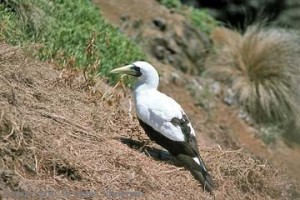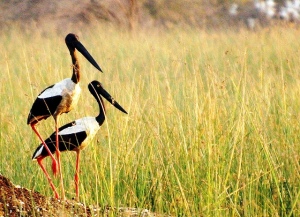 |
| Map of Gir National Park & Wildlife Sanctuary |
It is located 43 km (27 mi) north-east of Somnath, 65 km (40 mi) south-east of Junagadh and 60 km (37 mi) south-west of Amreli.
It was established in 1965, with a total area of 1,412 km2 (545 sq mi), of which 258 km2 (100 sq mi) is fully protected as national park and 1,153 km2 (445 sq mi) as wildlife sanctuary. It is part of the Kathiawar-Gir dry deciduous forests ecoregion.
In the 19th century, the rulers of Indian princely states used to invite the British colonists for hunting expeditions. At the end of the 19th century, only about a dozen Asiatic lions were left in India, all of them in the Gir Forest, which was part of the Nawab of Junagarh's private hunting grounds. Today, it is the only area in Asia, where Asiatic lions occur, and is considered one of the most important protected areas in Asia due to its supported species. The Gir ecosystem with its diverse flora and fauna is protected as a result of the efforts of the government forest department, wildlife activists and NGOs. However, faced with a drastic drop in the lion population in Gir, after British viceroys brought to his attention the plight of the lion in Asia, the sanctuary is the jewel of Gujarat's ecological resources. His son, Nawab Muhammad Mahabat Khan III later assisted in the conservation of the lions whose population had plummeted to only 20 through slaughter for trophy hunting.
Among the smaller mammals, porcupine and hare are common, but the pangolin is rare. The reptiles are represented by the mugger crocodile, Indian cobra, tortoise and monitor lizard which inhabit the sanctuary's bodies of water. Snakes are found in the bush and forest. Pythons are sighted at times along the stream banks. Gir has been used by the Gujarat State Forest Department which formed the Indian Crocodile Conservation Project in 1977 and released close to 1000 marsh crocodiles into Lake Kamaleshwar and other small bodies of water in and around Gir.
Things to Do :-
Gir Jungle Trail -
 |
| Guests enjoying Asiatic Lions sighting in their open Jeep during Jungle Trail |
- For Indian INR 800/-( Monday to Friday) & INR 1000/-( Sat, Sunday & Festival)
- For N.R.I OR Foreigners INR 5400/-( Monday to Friday)& INR 6000/-( Sat, Sunday & Any festival)
Diu :-
Diu is a town in Diu district in the union territory of Daman and Diu, India. Diu District is the tenth least populated district of India. The town of Diu lies at the eastern end of Diu Island and is known for its fortress and old Portuguese cathedral. It is a fishing town. The city is one of the hundred Indian cities competing in a national level competition to get the funds under Narendra Modi's flagship Smart Cities Mission. Diu will be competing for the one of last 10 spots against 20 cities from across India.
Sight Seeing :- Naida Caves, Diu fort, Nagoa Beach, St. Paul Church, Sampa Gateway, Diu Museum
Distance :- Approximately 02 hours drive
Contact us on adler-tours@hotmail.com or info@adler-tours.com for more details.
We can also help you in planning your next tour to Gujarat
Diu is a town in Diu district in the union territory of Daman and Diu, India. Diu District is the tenth least populated district of India. The town of Diu lies at the eastern end of Diu Island and is known for its fortress and old Portuguese cathedral. It is a fishing town. The city is one of the hundred Indian cities competing in a national level competition to get the funds under Narendra Modi's flagship Smart Cities Mission. Diu will be competing for the one of last 10 spots against 20 cities from across India.
Sight Seeing :- Naida Caves, Diu fort, Nagoa Beach, St. Paul Church, Sampa Gateway, Diu Museum
Distance :- Approximately 02 hours drive
Contact us on adler-tours@hotmail.com or info@adler-tours.com for more details.
We can also help you in planning your next tour to Gujarat








